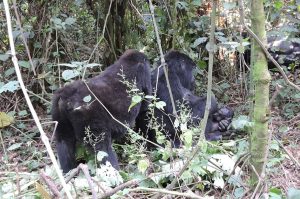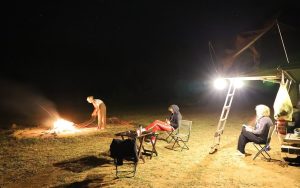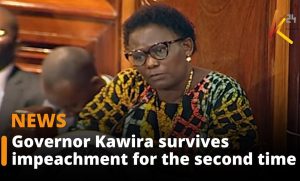The smooth handover from the bloc’s leadership from Kenyatta to Kikwete barely concealed the poisoned trade relation between the two neighbours. ROBIN OBINO reports.
Financing for infrastructure projects were top on the agenda at the East African Community (EAC) Heads of State Summit in Nairobi during which Kenya’s President Uhuru Kenyatta handed over the reigns of the bloc to his Tanzanian counterpart Jakaya Kikwete.
The presidents of the five member states adopted an alternative means to raise $100 million for the Central (Tanzania and Burundi) and Northern (Kenya, Uganda, South Sudan and Rwanda) Corridors. They also endorsed the integration of the two parallel projects into one Community initiative, giving the strongest indication of their desire to bridge the rift that was threatening to break up the regional organisation.
“The Northern Corridor projects will run as they are but under the larger EAC infrastructure programme. The same will apply to the Central Corridor projects. The ultimate objective of both projects is minimising delays in the movement of goods and people across the region, which is the main agenda for the EAC integration,” said Kenya’s Foreign Affairs Minister Amina Mohamed in a statement.
The responsibility of steering the EAC through this phase rests on Mr Kikwete, who is serving the last few months as head of state as Tanzania prepares to hold its General Election in October.
Kenyatta held the chairmanship for slightly longer than the stipulated one year, after the Summit was postponed at the eleventh hour in November after the Tanzanian head of state was taken ill.
However, the leaders, through the third EAC Infrastructure Summit in Nairobi, which was attended by their representatives, directed their Finance ministers to find ways of mobilising funding for the infrastructure projects, and then submit their proposal for adoption.
The focus of the projects is construction of roads, railways, an oil pipeline, harmonisation of axle load controls and service automation at border points.
But the smooth handover from Kenyatta to Kikwete barely concealed the poisoned trade relation between the two neighbours. Even before a simmering spat over the movement of tourists between the countries was resolved; Dar es Salaam slammed Kenya Airways with restrictions over its airspace.
The national carrier said in a statement that it was reducing its weekly flights to Tanzania from 42 to 14 effective immediately.
“Kenya Airways wishes to notify its customers that it has reduced its frequencies to Dar es Salaam from 42 to 14 per week and will now only fly twice daily from March 19th March 2015.
“This is as a result of a communication from the Tanzania Civil Aviation Authority (TCAA) to the Kenya Civil Aviation Authority (KCAA) reducing flight frequencies of Kenyan carriers into Tanzania,” it said.
The airline’s announcement came as officials from the Kenyan government reached out to their Tanzanian counterparts with a view to resolving the impasse.
The airline is facing increased pressure from Gulf airlines on its African routes. Last year, it was also forced to stop flying to a number of West African routes following the outbreak of Ebola in that region. The stand off with Tanzania was resolved after Kenyatta reached out to Kikwete.
INFRASTRUCTURE PROJECTS
Kenya, Uganda, Rwanda and South Sudan are firming up their plans for the construction of both crude oil and petroleum products pipelines. The first will link the oil production zones of Uganda, South Sudan and Kenya to the Lamu port with the second pipeline transporting refined petroleum products from Mombasa to Uganda and Rwanda, easing reliance on petroleum tankers.
Construction of the standard gauge railway planned to run from Mombasa to Kigali, with a spur to South Sudan, has already begun. Tanzania and Burundi also have a bilateral arrangement to construct a 200-kilometre standard gauge railway between Uvinza in Tanzania and Musongati in Burundi, estimated to cost $550 million.
Although the EAC political federation did not feature in Summit as had been planned in November, the leaders will assessed a draft of the roadmap now under discussion by experts. The draft will later be taken to the Council of Ministers, and presented to the heads of state for approval.
The federation was dropped from the main agenda after Burundi, Kenya, Rwanda and Tanzania sought more time to consult on the scope and timelines for the union scheduled to be in place in a decade.
Kenyatta said member states are committed to evolving into one federation, and that the timelines are not too ambitious and would be met as scheduled.
“We have done great things together before. In the past few years, the idea and practice of full integration have gathered momentum. We shall not pass up the opportunity. More fundamentally, in a world where distance is shrinking, where markets are larger, and where people are far more mobile, it makes good sense to unite into one.”




